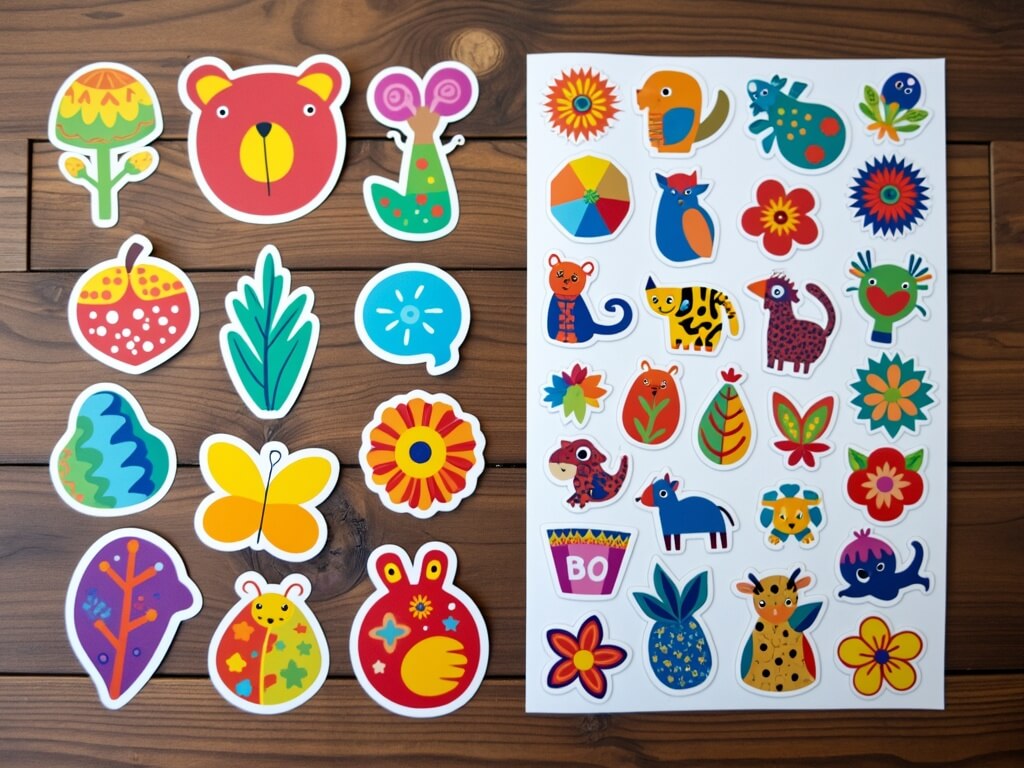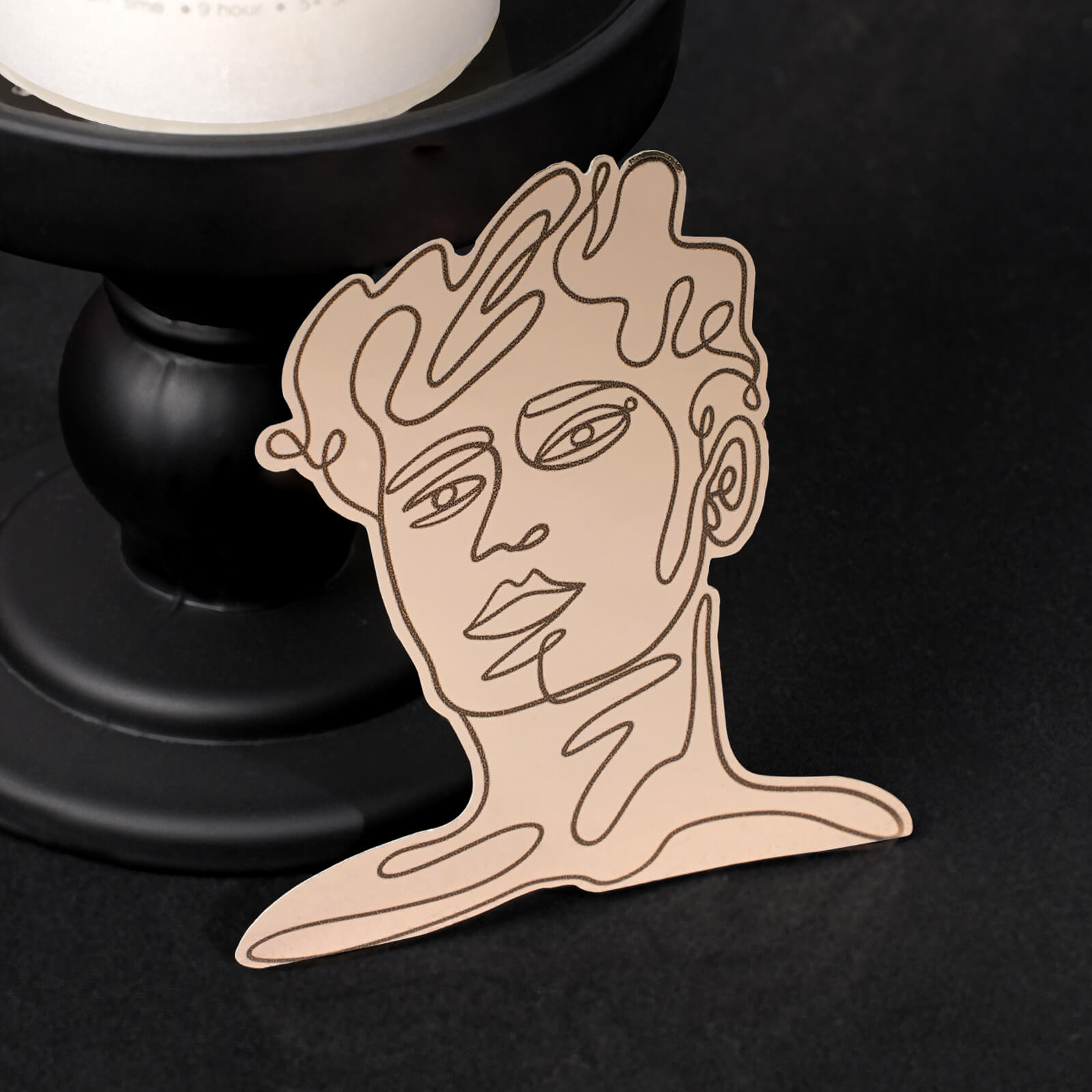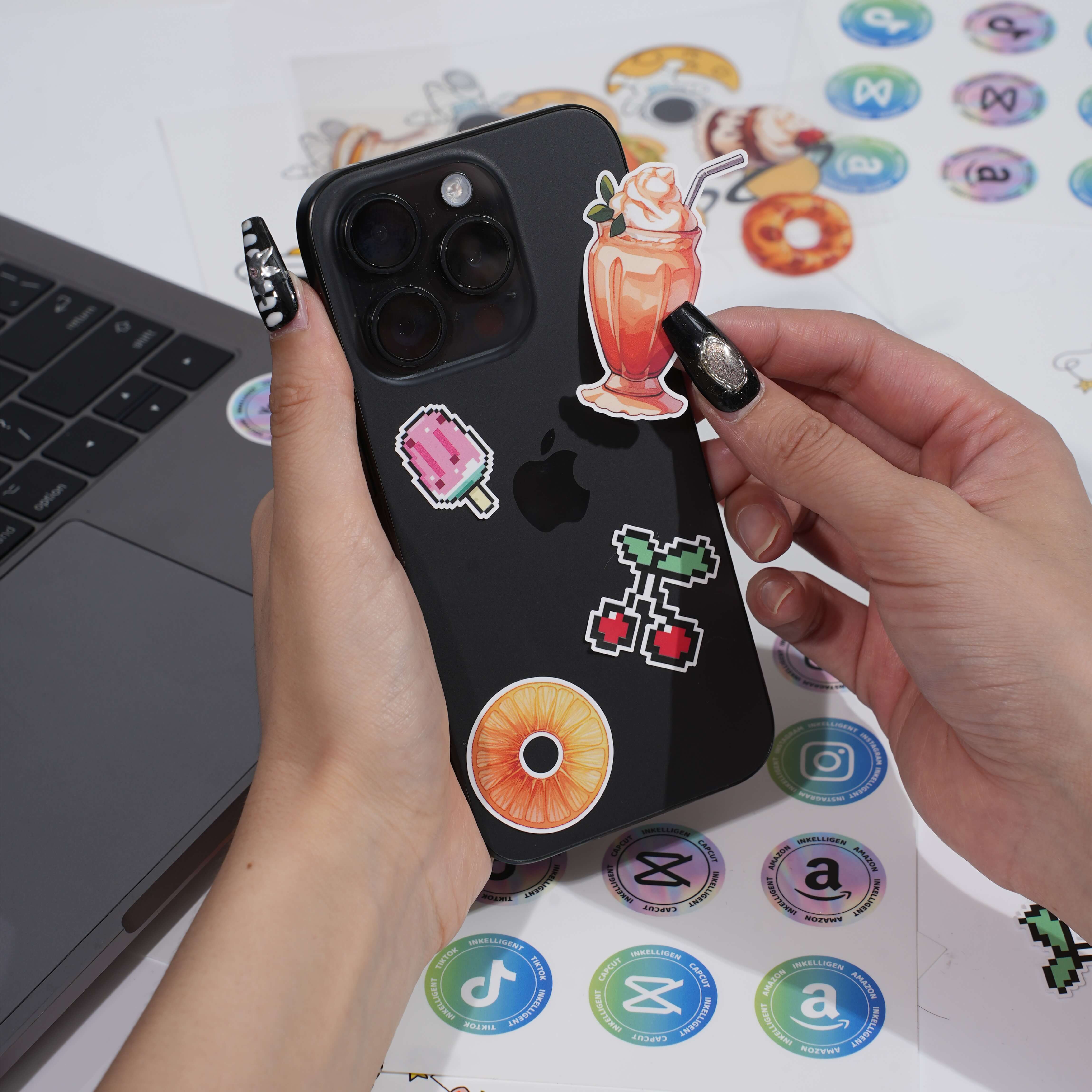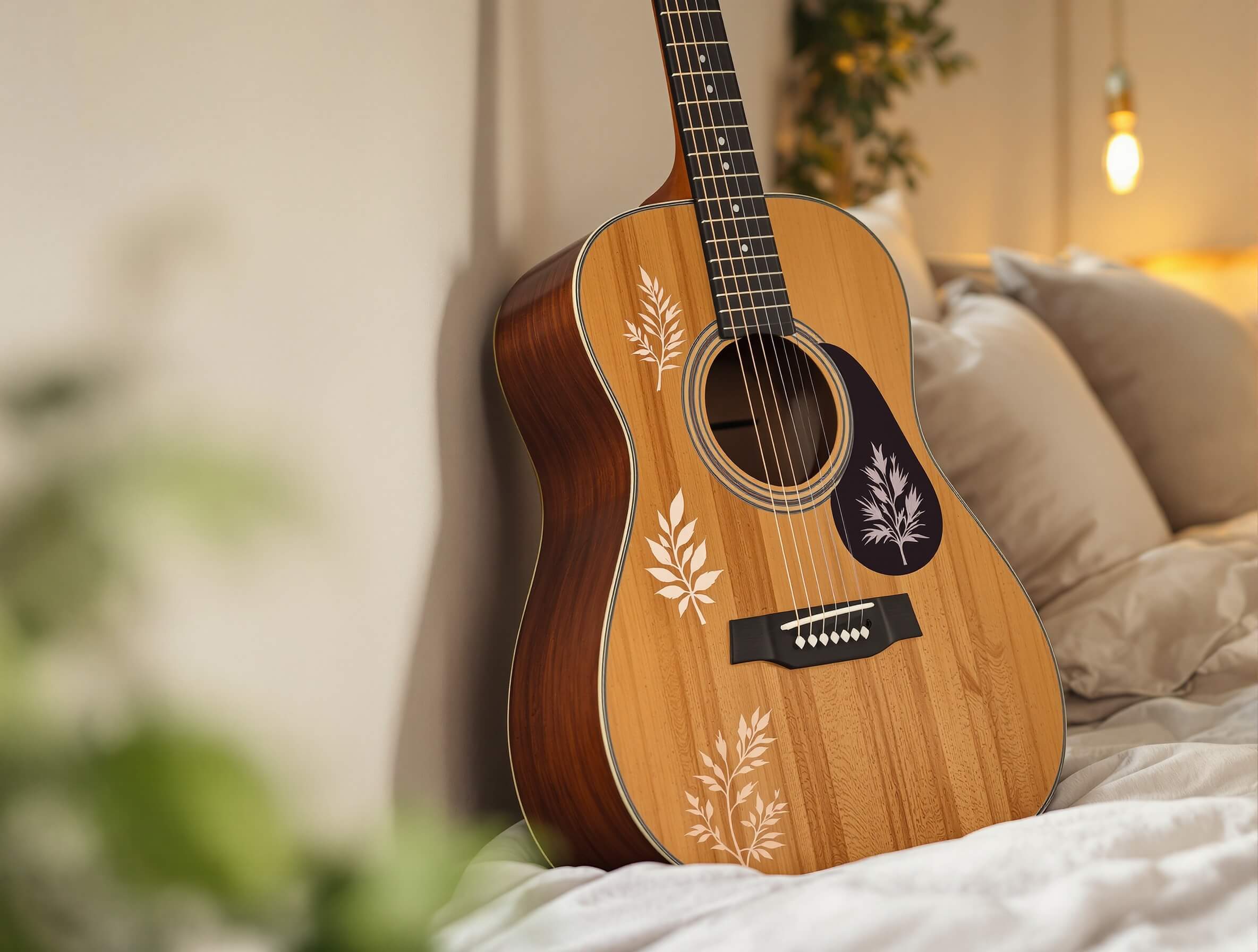
Are you looking to personalize your instrument and showcase your unique style? Guitar stickers are fantastic ways to express your personality and enhance your guitar’s appearance. From decorative designs to helpful guitar fretboard stickers that aid learning, these small additions can make a big impact.
In this comprehensive guide, we'll explore the benefits of using guitar stickers, their history and popularity, different types, and detailed tips for applying and safely removing them. Let's dive into the exciting world of guitar customization!
Why Choose Guitar Stickers
Showcase Your Personality and Style
Your guitar isn't just a musical instrument—it's an extension of your personality. Guitar stickers allow musicians to convey their individuality, interests, and artistic tastes.
Whether you prefer vintage graphics, bold modern designs, or humorous decals, stickers help you express your style vividly. They're an affordable and creative way to transform your guitar, ensuring it stands out from the crowd while reflecting who you are as a musician.
Guitar Fretboard Stickers as Helpful Learning Tools
For beginners, guitar fretboard stickers are incredibly practical. They clearly mark notes, chords, or scales, providing visual guidance during practice sessions. These stickers accelerate the learning process, helping you memorize finger positions and musical theory quicker and more effectively.
Even intermediate players find them useful when exploring new techniques or scales. These helpful stickers combine practicality with aesthetics, enhancing your experience as a guitarist.
Minimal Impact on Guitar Sound Quality
One common concern among guitarists is that stickers might affect their instrument's sound. Thankfully, guitar stickers cause minimal to no noticeable impact on sound quality. Properly placed decals and stickers are lightweight, thin, and don't interfere with vibration or resonance. This means you can confidently personalize your guitar without worrying about negatively affecting its tone or acoustic properties.
The History and Popularity of Guitar Stickers
Guitar stickers first became popular in the latter half of the 20th century, notably during the rise of rock and punk music cultures. Musicians sought new ways to differentiate themselves and their instruments on stage, often applying stickers representing favorite bands, social messages, or rebellious statements. Icons like Jimi Hendrix, Billie Joe Armstrong, and Tom Morello famously customized their guitars with decals and stickers, further popularizing the trend.
Today, guitar decals remain widely popular, transcending genres and generations. Musicians of all styles—from pop and rock to folk and country—use guitar stickers to personalize instruments, making them uniquely recognizable. Social media has accelerated their popularity, inspiring musicians worldwide to creatively decorate guitars, turning instruments into artistic expressions of personal identity and musical passion.
How to Perfectly Decorate Your Guitar with Stickers
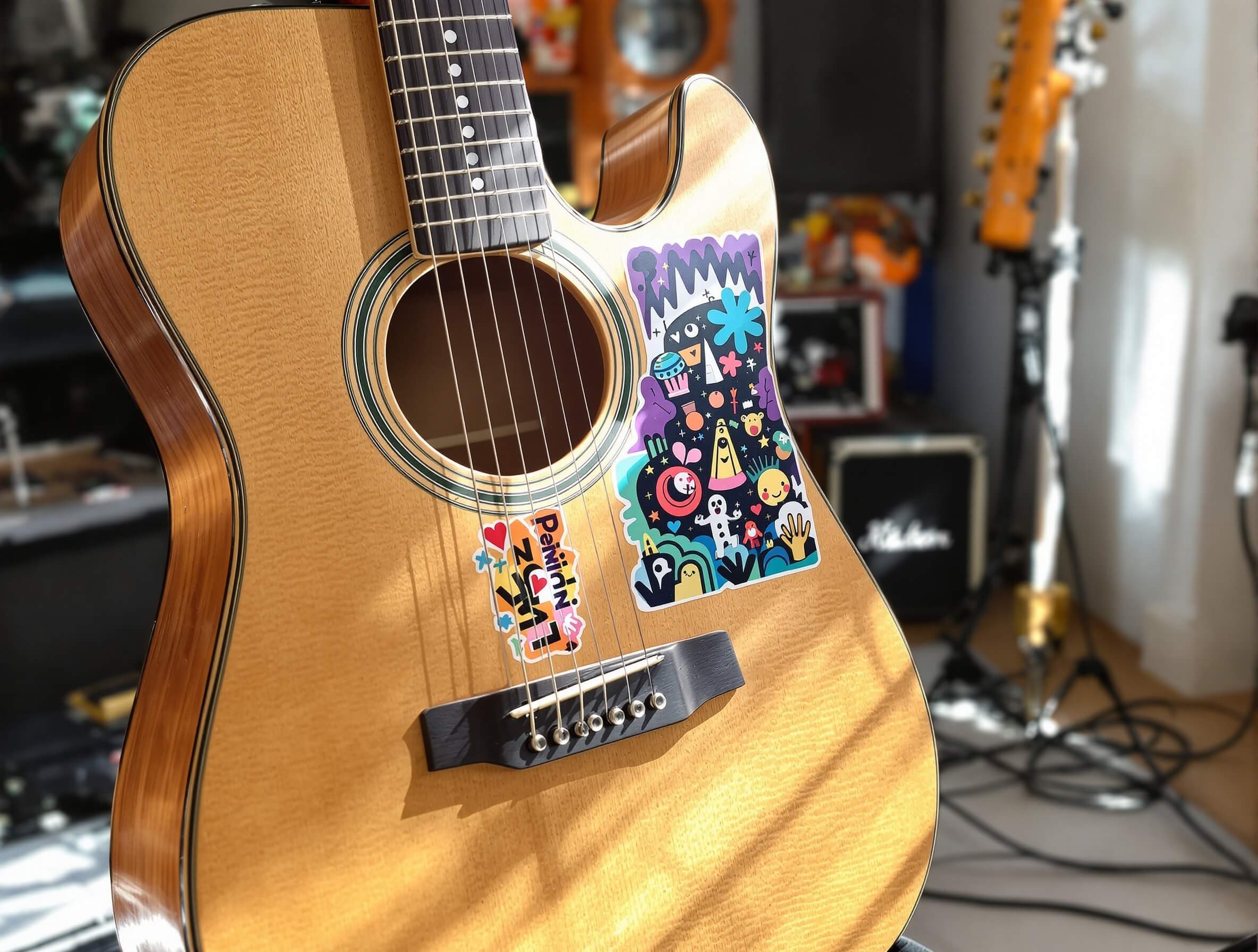
Personal Style
Choosing guitar decals should always reflect your personal taste and musical identity. Consider your favorite colors, bands, artistic themes, or meaningful symbols. Stickers can range from subtle accents to bold statements, depending on your preference.
You might choose vintage-inspired graphics, vibrant abstract art, or iconic logos from bands you admire. Whatever your style, let your stickers tell your story and add character to your guitar.
Placement
Sticker placement significantly affects your guitar's appearance and practicality. The guitar panel (body front) is highly visible, perfect for large decorative decals showcasing your favorite artwork or quotes.
The fretboard, meanwhile, offers practical and aesthetic options. Guitar fretboard stickers help beginners identify notes and chords easily, while guitar inlay stickers add sophisticated visual enhancements between frets.
Strategic placement balances visual appeal with practicality, ensuring your stickers enhance your overall guitar-playing experience.
Sticker Quality
Sticker quality matters greatly when applying decals to valuable instruments. Always choose removable stickers to prevent glue residue or surface damage. High-quality vinyl stickers are ideal—they're waterproof, durable, easy to apply, repositionable, and removable without leaving marks.
Investing in better-quality stickers ensures your guitar remains pristine and appealing, and that your decals maintain their vibrancy and adhesion over time.
Sticker Types
Guitar Fretboard Stickers
Guitar fretboard stickers serve educational purposes, assisting with learning notes, chords, and scales. They're usually placed directly on the fretboard, clearly marking frets and note positions.
For beginners, these stickers simplify memorization, improve finger placement accuracy, and accelerate musical development. Even advanced players occasionally use them when mastering complex scales or new chord structures, making fretboard stickers invaluable learning tools.
Guitar Inlay Stickers
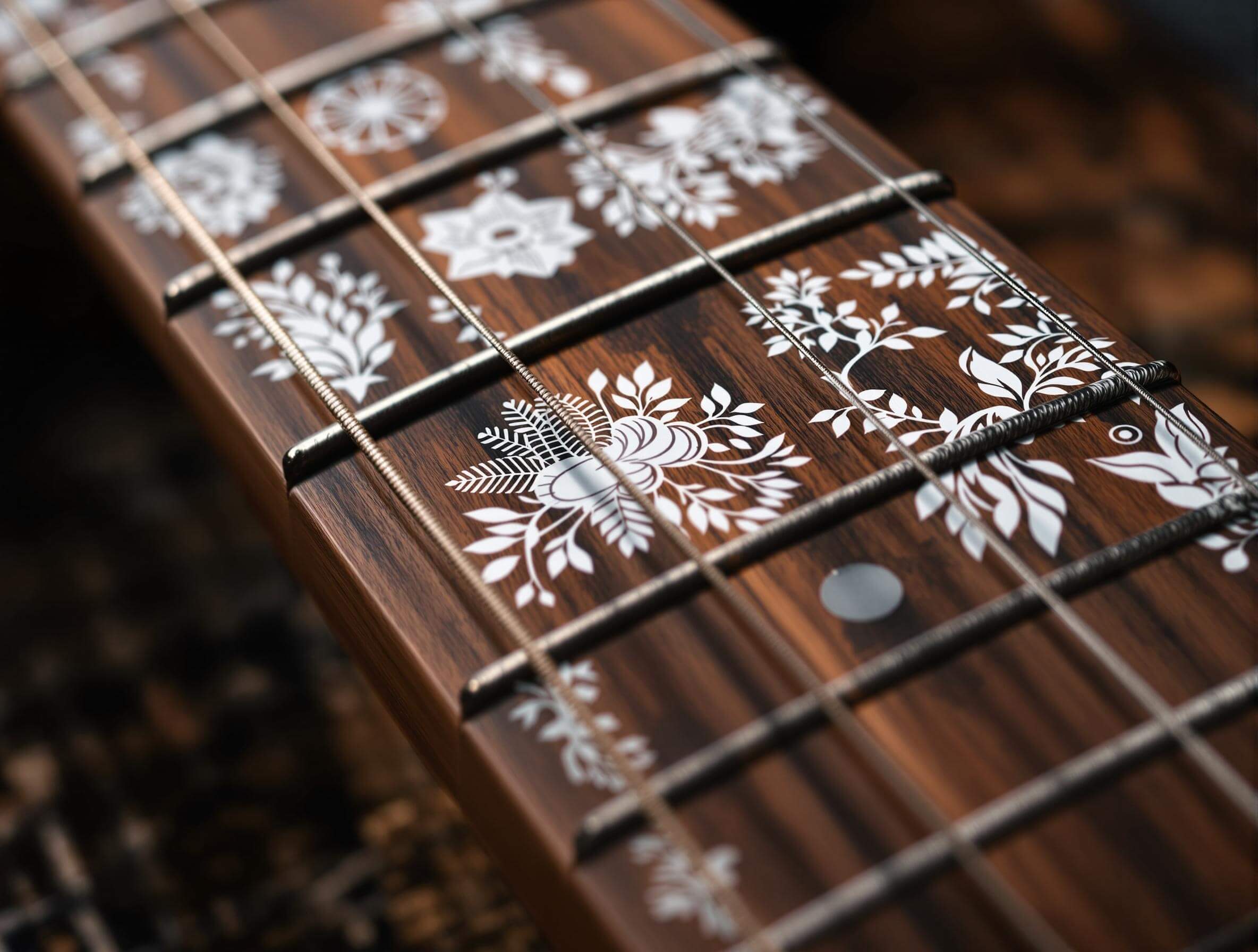
Guitar inlay stickers primarily offer decorative enhancement. They mimic the sophisticated appearance of high-end fretboard inlays, such as mother-of-pearl designs, floral patterns, vines, or intricate geometric shapes.
These stickers are placed between frets, adding visual elegance without hindering playability. Guitar inlay stickers elevate your guitar’s look, offering luxurious aesthetics at affordable prices and allowing instant customization whenever you desire.
Guitar Panel Stickers
Guitar panel stickers are decorative decals placed prominently on the guitar's body. They're available in countless designs—from band logos, meaningful quotes, and abstract patterns, to humorous illustrations—allowing extensive personal decoration.
These stickers are easy to apply, reposition, or remove without damaging your instrument. Guitar panel stickers personalize your guitar, transforming it into a unique visual representation of your personality, tastes, and musical identity.
How to Remove Stickers from Your Guitar
Sometimes you might want to remove stickers to refresh your guitar's appearance or apply new decals. Follow these careful steps to safely remove stickers without damaging your guitar’s finish or surface.
Materials Needed
Prepare these materials before beginning:
- Hair dryer
- Goo Gone adhesive remover (or similar gentle adhesive remover)
- Plastic scraper or credit card
- Mild soapy water
- Microfiber or soft cotton cloth
- Guitar polish or oil (optional but recommended)
Try Peeling Off the Sticker
Begin by gently attempting to lift the sticker from a corner using your fingernail or plastic scraper. Be cautious and avoid excessive force to prevent surface damage. If the sticker resists or tears easily, stop immediately and proceed to the next step.
Use a Hair Dryer
Set your hair dryer to low or medium heat. Hold it approximately six inches from the sticker, evenly warming the entire sticker surface for 30-60 seconds. Heat softens adhesive, making removal easier. Avoid excessive heat or prolonged exposure to prevent guitar surface damage.
Try Peeling the Sticker Again
With the adhesive softened, carefully lift the sticker edges using your plastic scraper or credit card. Peel slowly and steadily at a low angle to minimize residue. Continue gently heating problem areas if needed. Patience ensures clean removal without damaging your guitar.
Remove Residue
If adhesive residue remains, apply a small amount of Goo Gone into a soft cloth. Gently rub residue areas, letting the remover soak briefly. Carefully scrape softened residue away using your plastic scraper or card, working gently and patiently until the guitar surface feels smooth again.
Clean the Guitar Surface with Soapy Water
After residue removal, dampen a microfiber cloth with mild, soapy water. Gently clean the guitar surface to remove any remaining adhesive remover or dirt. Avoid excessive moisture, wiping gently and carefully to protect your guitar finish from water damage.
Dry the Guitar
Use a clean, dry microfiber cloth to gently wipe your guitar dry, ensuring no moisture remains. Thorough drying prevents water marks, protects finishes, and maintains your guitar's overall condition and appearance.
Use Guitar Polish or Oil
Finally, apply guitar polish or instrument-safe oil to restore the guitar's original luster and protect its finish. Polish gently in circular motions, following product instructions. Polishing revitalizes your guitar, leaving it looking clean, vibrant, and professionally maintained.
Final Thoughts
Applying guitar stickers and decals is an excellent method to showcase your style, personalize your instrument, and enhance your musical journey. Whether opting for practical fretboard stickers, elegant inlay stickers, or expressive panel decals, quality removable vinyl stickers ensure minimal impact on sound and instrument integrity.
Follow careful application and removal methods outlined in this guide, ensuring your guitar stickers enrich—rather than risk—your guitar’s aesthetic and longevity. With the right stickers and thoughtful placement, your guitar becomes a unique reflection of your personality, creativity, and musical passion.
